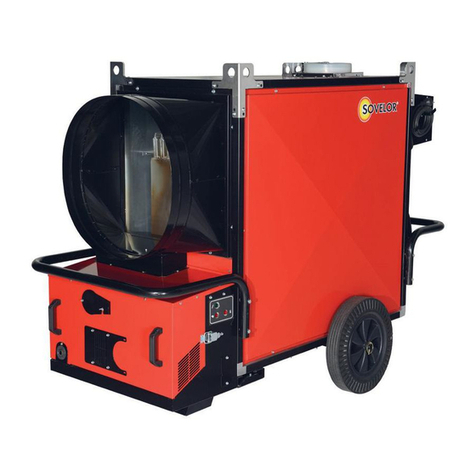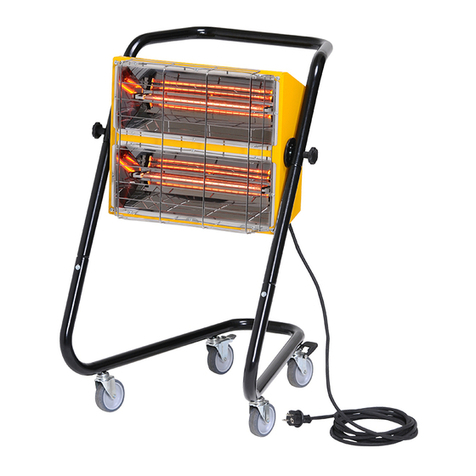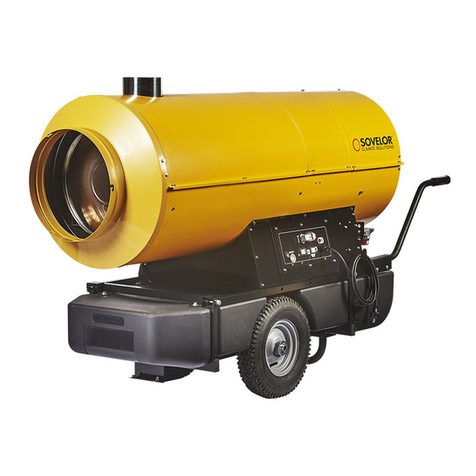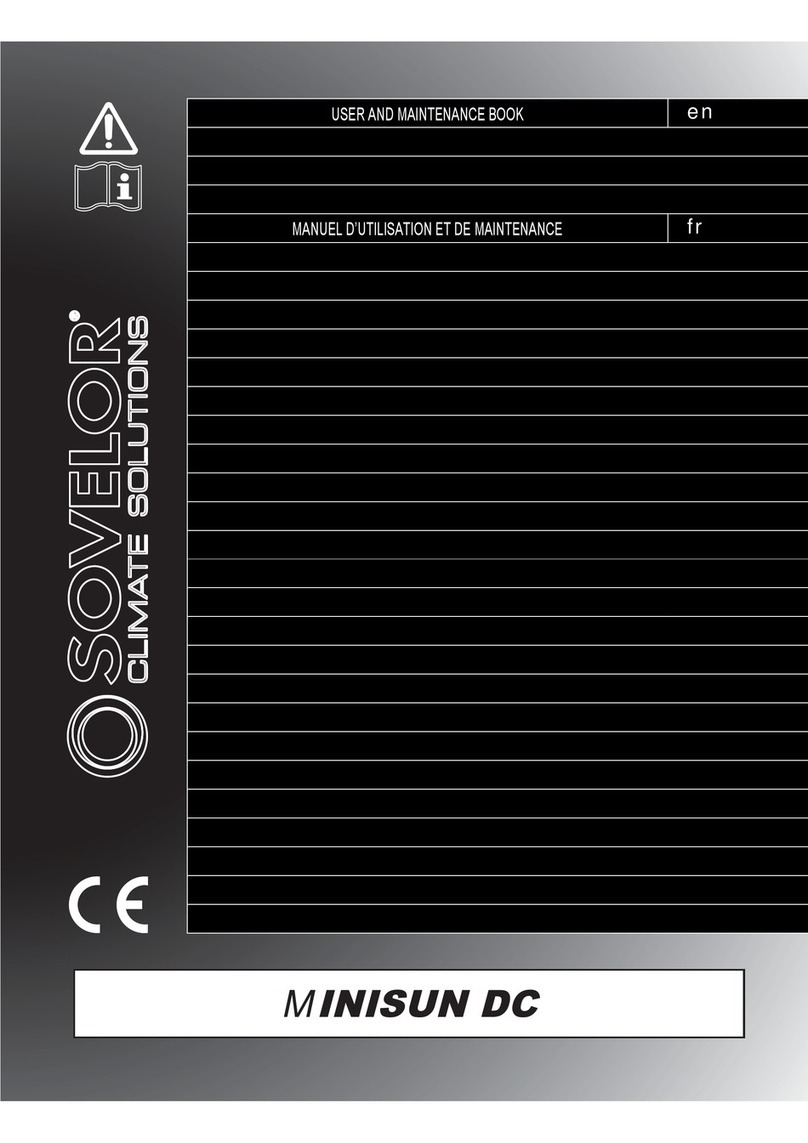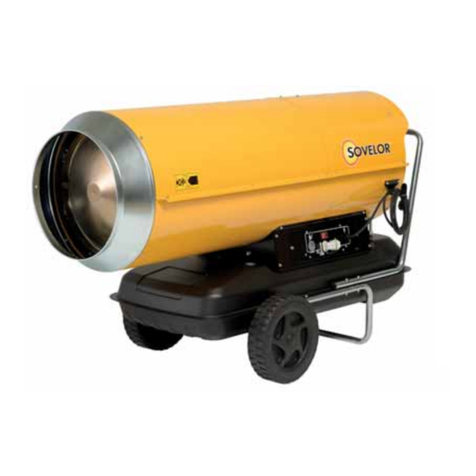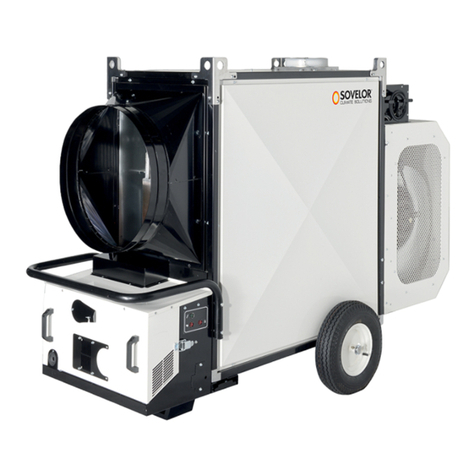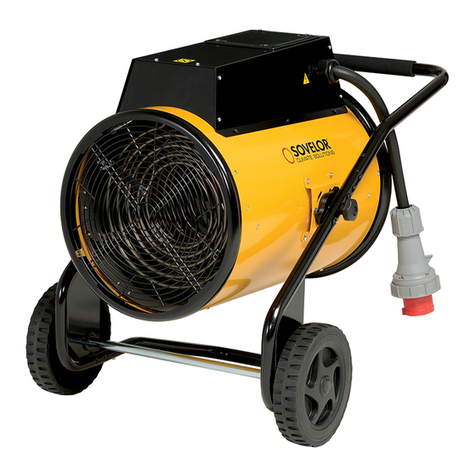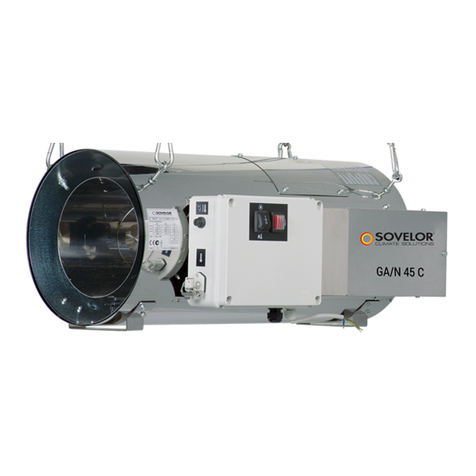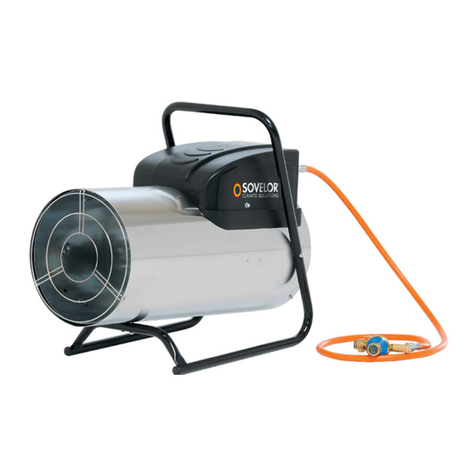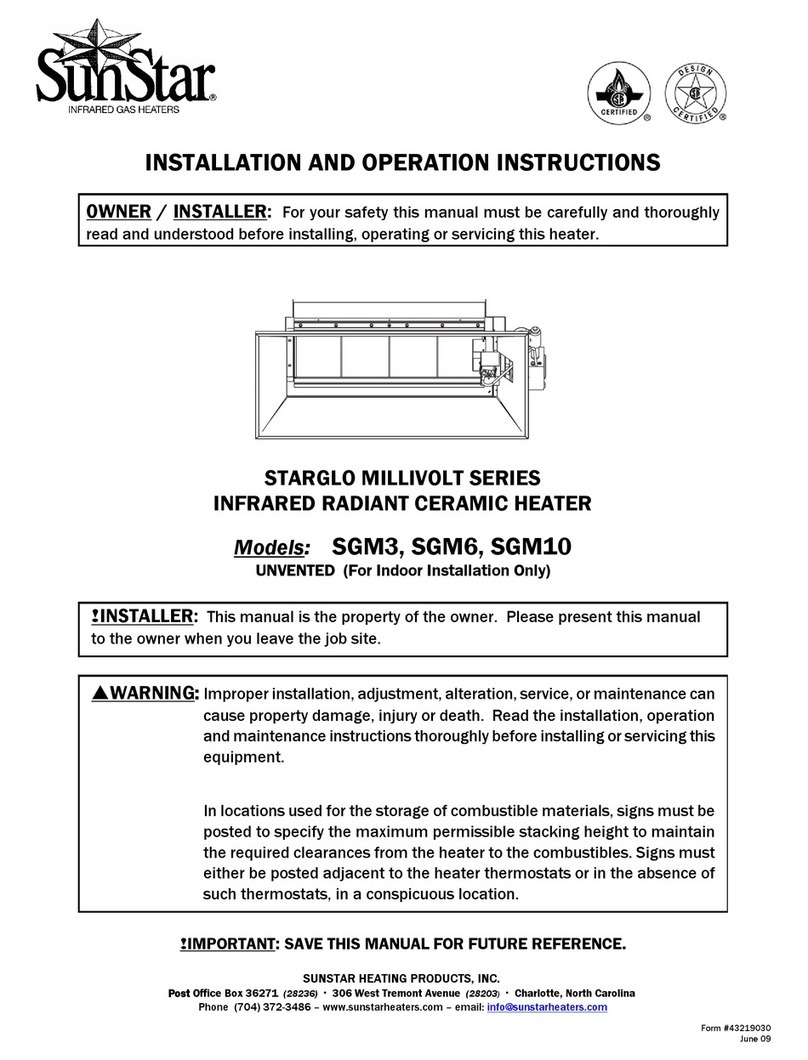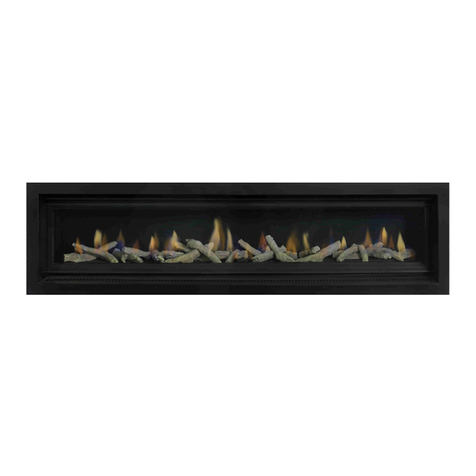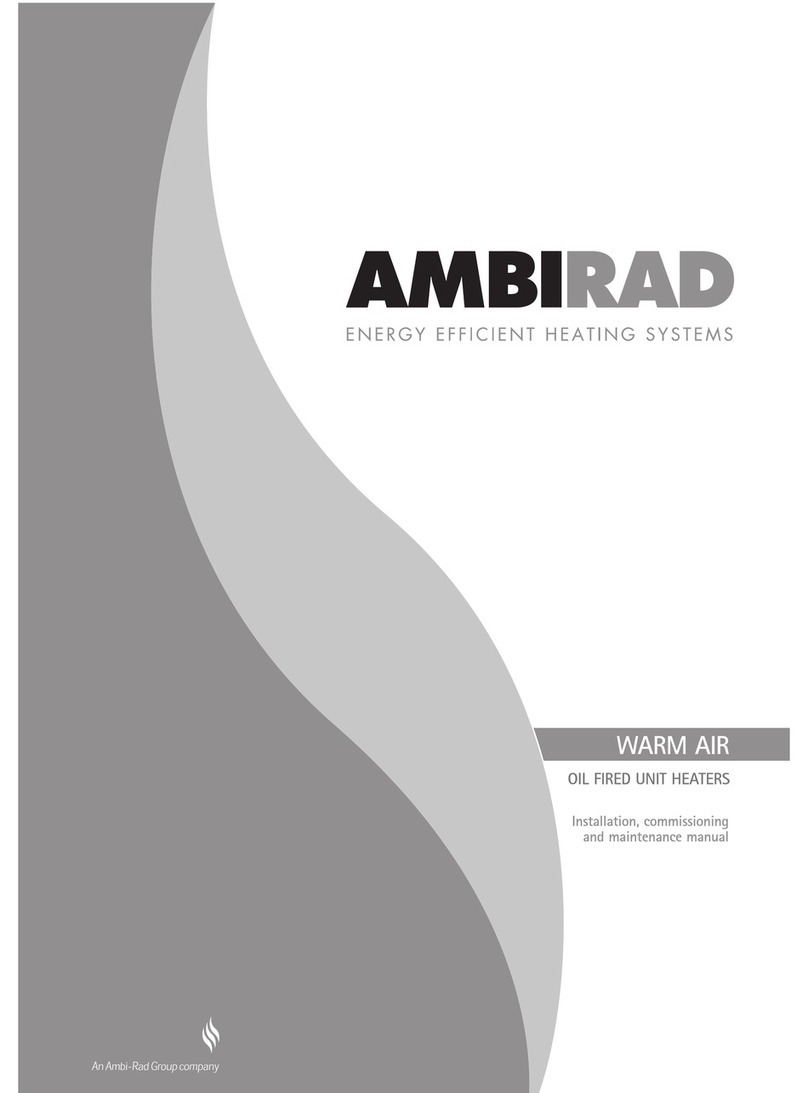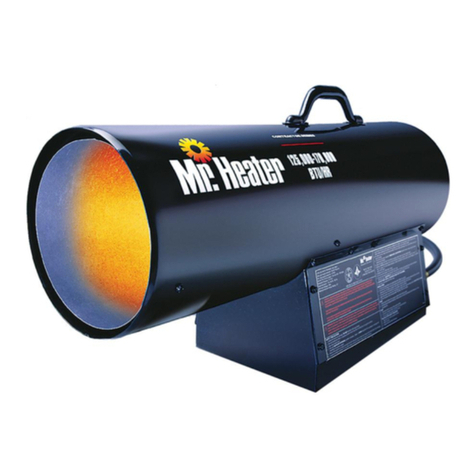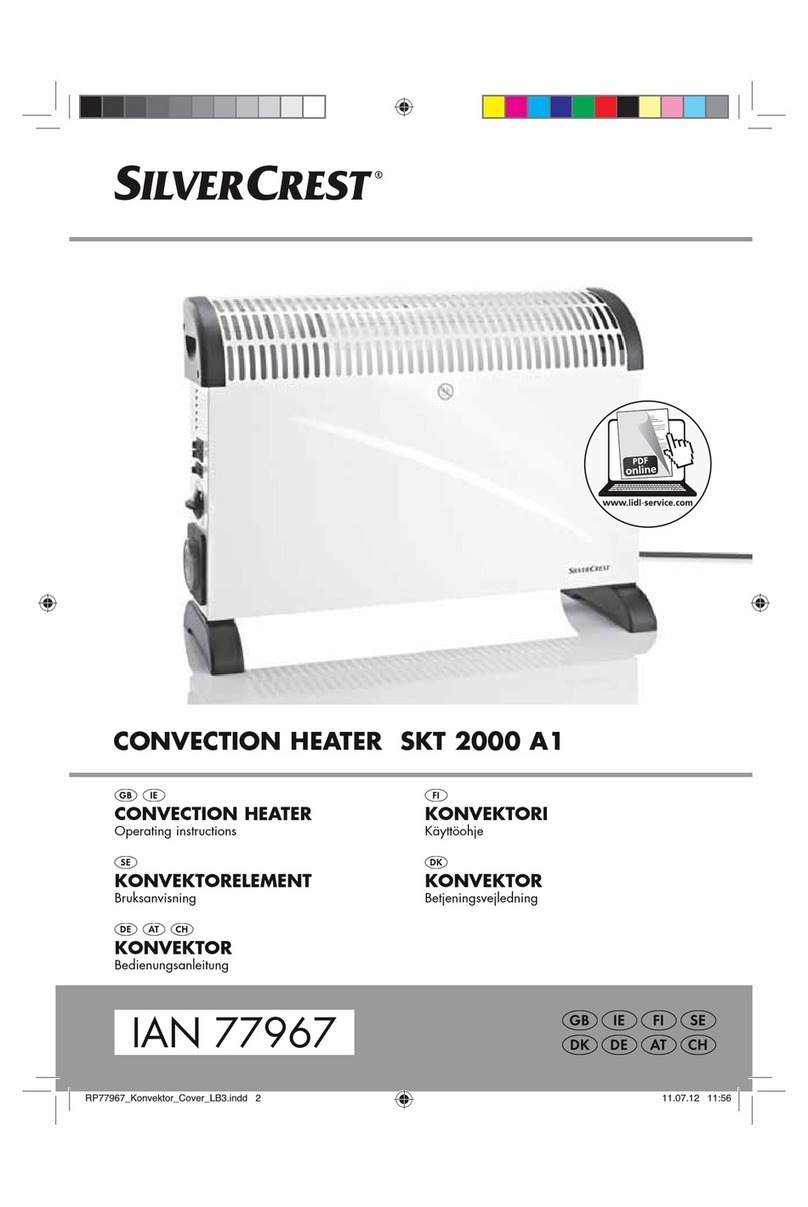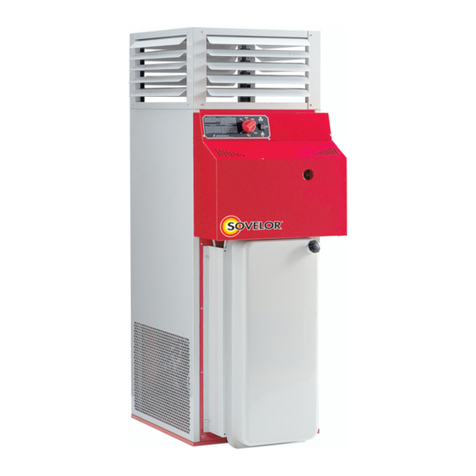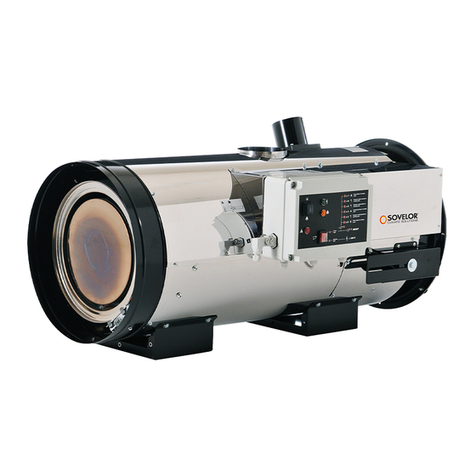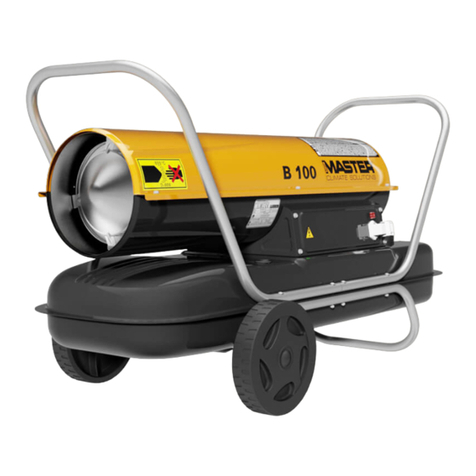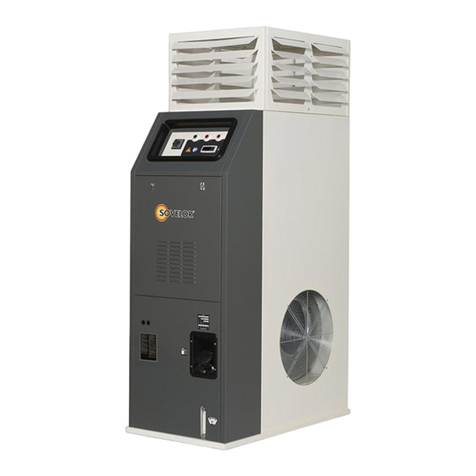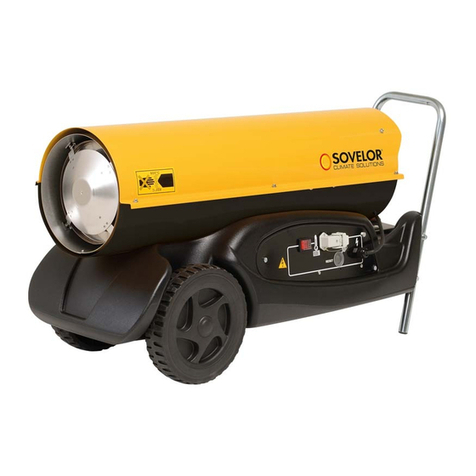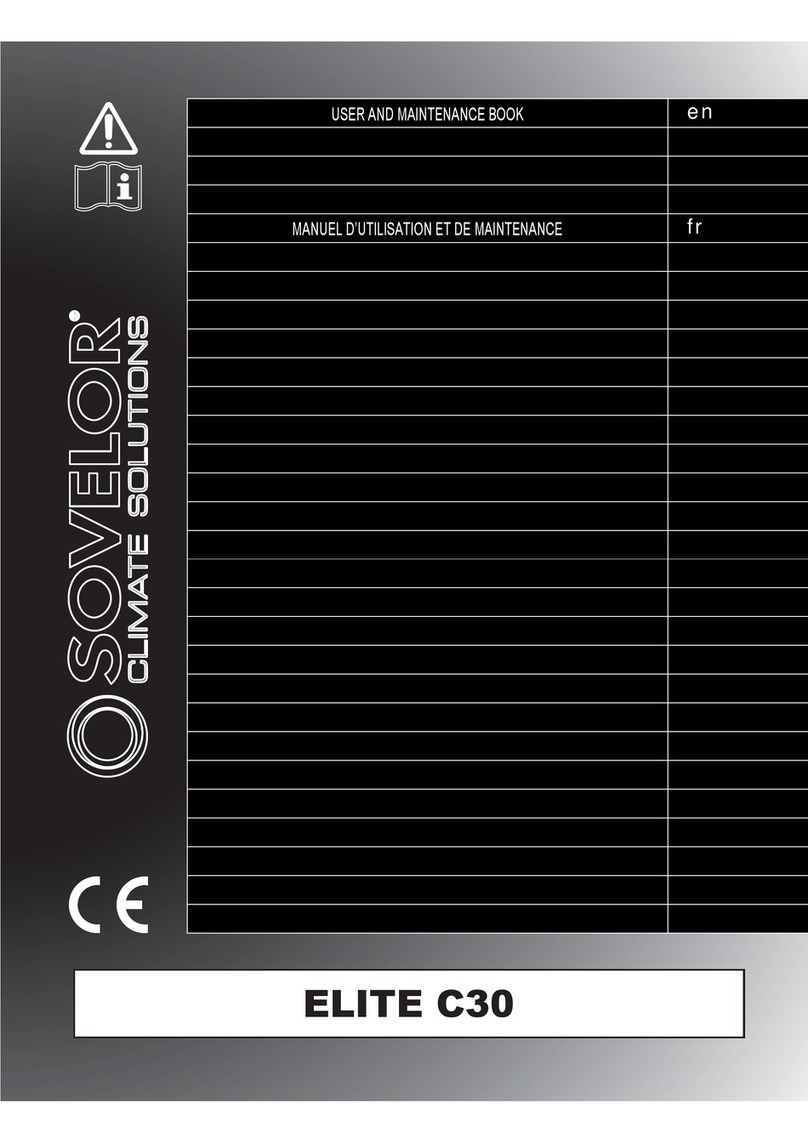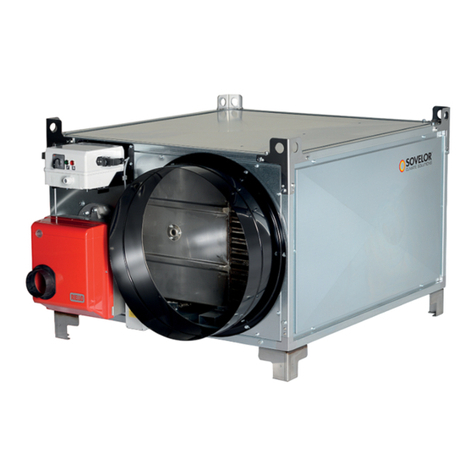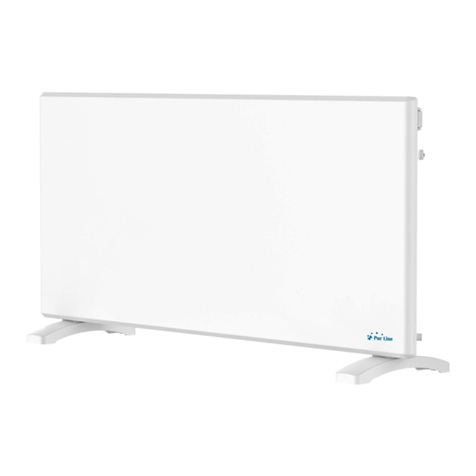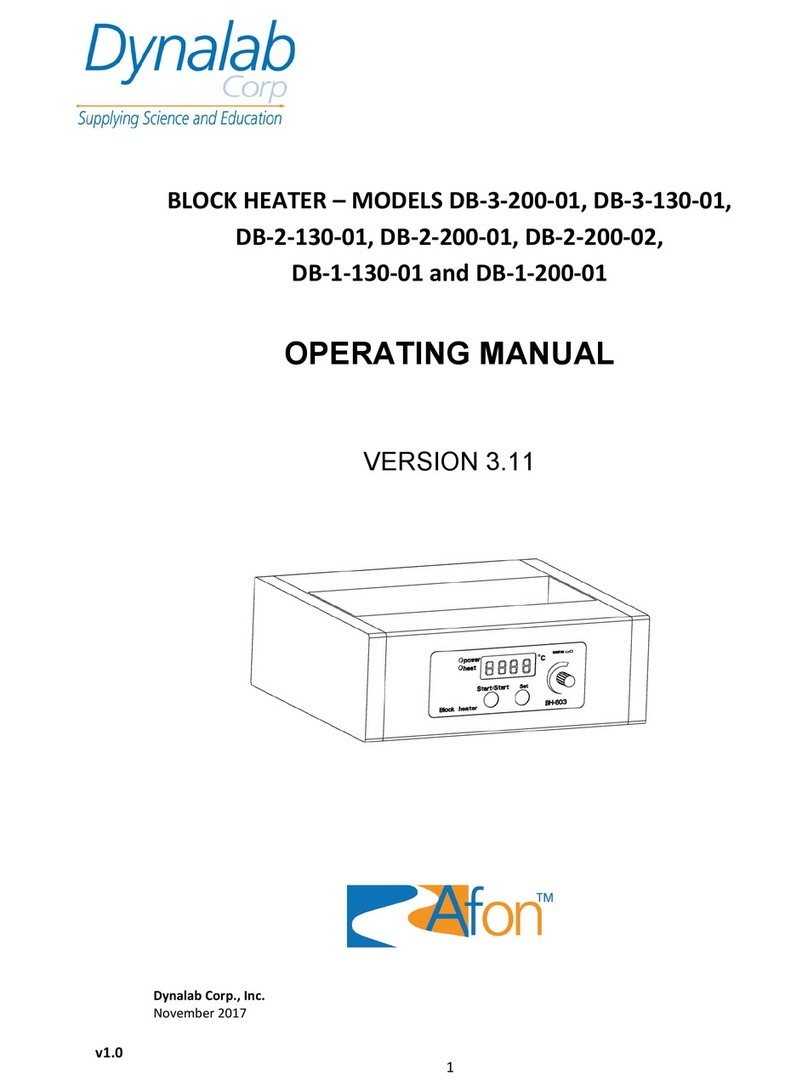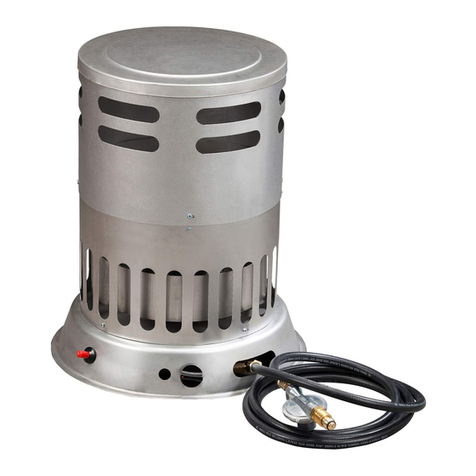
FR
10
IMPORTANT
Avant toute utilisation du générateur, nous vous prions de lire attentivement toutes les instructions pour l'emploi
mentionnées ciaprès et d'en suivre scrupuleusement les indications. Le constructeur n'est pas responsable pour les
dommages aux personnes et/ou aux biens dus à une utilisation impropre de l'appareil.
Ce livret d'utilisation et d'entretien est partie intégrante de l'appareil. Il doit donc être conservé soigneusement et
accompagner l'appareil en cas de revente.
DESCRIPTION
Les générateurs d'air chaud sont conçus pour chauffer des locaux
aérés de moyenne ou grande dimension pour lesquels un système
de chauffage fixe ou mobile est nécessaire.
AttentionNE PAS UTILISER POUR LE CHAUFFAGE DE LOCAUX
D'HABITATION DE BATIMENTS RÉSIDENTIELS.
POUR L'UTILISATION DANS DES LOCAUX PUBLICS,
SE REPORTER AUX RÉGLEMENTATIONS
NATIONALES EN VIGUEUR.
Les générateurs d'air chaud peuvent fonctionner avec du gaz
propane (G31) ou avec un mélange GPL de gaz butane (G30) et de
gaz propane (G31), conformément aux catégories de gaz indiquées
dans le Tab. I et mentionnées sur la plaquette d'identification de la
machine.
Les générateurs d'air chaud sont à combustion indirecte. L'air est
chauffé en utilisant l'énergie thermique développée pendant la
combustion puis envoyé au local à chauffer avec les produits de la
combustion sont éliminés à travers un conduit de cheminée : le local
devra toujours être correctement aéré afin d'assurer un recyclage
d'air suffisant.
Plusieurs dispositifs de sécurité (système électronique de
surveillance, thermostat de température excessive LI,
microinterrupteur ou pressostat de l'air) interviennent en cas de
dysfonctionnement grave :
• L'appareillage électronique de contrôle du brûleur intervient
lorsque la flamme est irrégulière ou qu'elle s'éteint ou encore
lorsque la tension d'alimentation devient trop faible (T < 190 V
pendant plus de 20 secondes) ;
• le thermostat de température excessive LI intervient si la
température de la chambre de combustion franchit le seuil de
sécurité ;
• l'interrupteur de flux d'air minimum (3) intervient en cas
d'insuffisance du débit d'air.
Dans chacun des cas décrits, le fonctionnement du générateur
d'air chaud s'arrête définitivement ou temporairement en fonction de
l'anomalie rencontrée et le témoin du poussoir de réarmement (8)
s'allume :
• si le témoin s'allume jaune, la machine est en arrêt temporaire ;
elle se remettra automatiquement en marche lorsque la
condition de défaut sera restaurée (basse tension.).
• Si le témoin s'allume rouge, la machine s'arrête définitivement
en mode "panne" ; elle ne peut être remise en marche qu'après
pression du poussoir de réarmement (8.).
AttentionLorsque le témoin rouge (8) est allumé, le générateur
est en condition de "panne" : cette condition est un
signal d'ANOMALIE.
Il est indispensable de toujours repérer la cause de la
panne et de la résoudre avant de remettre le
générateur en marche (Cf. "ANOMALIES DE
FONCTIONNEMENT, CAUSES ET SOLUTIONS").
Les générateurs d'air chaud de la série GA/N peuvent être
complétés par toute une série d'accessoires :
a) Horloge programmateur ou thermostat d'ambiance ou autre
dispositif électromécanique pour la commande automatique de
mise en marche et d'arrêt.
b) Kit pour le contrôle à distance par PC.
c) Kit pour le contrôle à distance par tableau (distance maxi 5
mètres), très utile lorsque l'installation au plafond ou dans un
local exigu empêche ou limite l'accès au tableau de commande
d) Kit pour le démarrage différé du générateur, très utile en cas
d'installation multiple pour éviter la surcharge de la ligne
d'alimentation électrique
e) Kit anti-condensation, indispensable pour les installations dans les
locaux à fort taux d'humidité (serres, élevages etc.) pour
supprimer les risques de défaut d'allumage.
CONSEILS D'ORDRE GÉNÉRAL
L'installation, le réglage et l'utilisation du générateur d'air chaud
doivent être accomplis dans le respect de toutes les normes, lois
nationales et locales en vigueur concernant l'utilisation de la
machine.
Le générateur d'air chaud peut être installé suspendu au plafond à
l'aide d'élingues et/ou de chaînes de dimension et longueur
appropriées, à fixer aux 4 crochets de suspension.
Attention S'assurer que les élingues et/ou chaînes forment un
angle maximum de 5° par rapport à la verticale au
plafond.
Il doit toujours être installé à une distance d'au moins 1 mètre de
toute cloison, sol et/ou plafond et d'au moins 300 mm du sol.
AttentionIl est interdit d'utiliser la machine sur un sol en
matériaux inflammables.
La distance minimum des sorties d'air de tout objet, personne
et/ou animal doit être d'au moins 2 mètre. Avant l'installation il est
toutefois indispensable de vérifier que lesdits objet, personne et
animal sont en mesure de supporter la température maximale de
sortie, qui peut être calculée à partir du total de la température
ambiante + ǻT @ 2 m (comme indiqué sur l'étiquette appliquée sur le
générateur d'air chaud).
AttentionIl est dangereux d'utiliser la machine dans des locaux
en sous-sol ou semi-enterrés.
Il convient de toujours s'assurer que :
• Les instructions du présent livret sont scrupuleusement
respectées ;
• Le générateur n'est pas installé dans des zones à fort risque
d'incendie ou d'explosion ;
• Aucun matériau inflammable n'est déposé à proximité de
l'appareil (la distance minimum doit être de 3 mètres) ;
• Tout risque de surchauffe des cloisons ou plafond réalisé dans
des matériaux inflammable a été analysé et écarté
• Toutes les mesures aptes à prévenir les incendies ont été
adoptées ;
• L'aération du local dans lequel est installé le générateur est
garantie et suffit aux besoins du brûleur ; en particulier les
limites relatives à la qualité de l'air du local à chauffer doivent
respecter les réglementations nationales ou locales en vigueur
ou, faute de normes et/ou indications, les termes de la norme
EN 1596:2008:




















